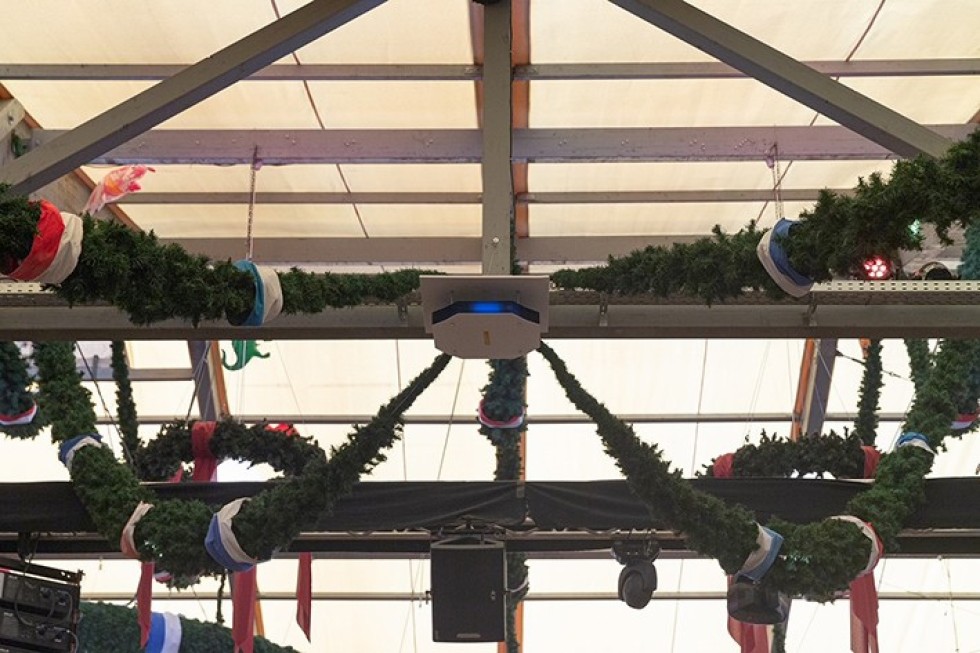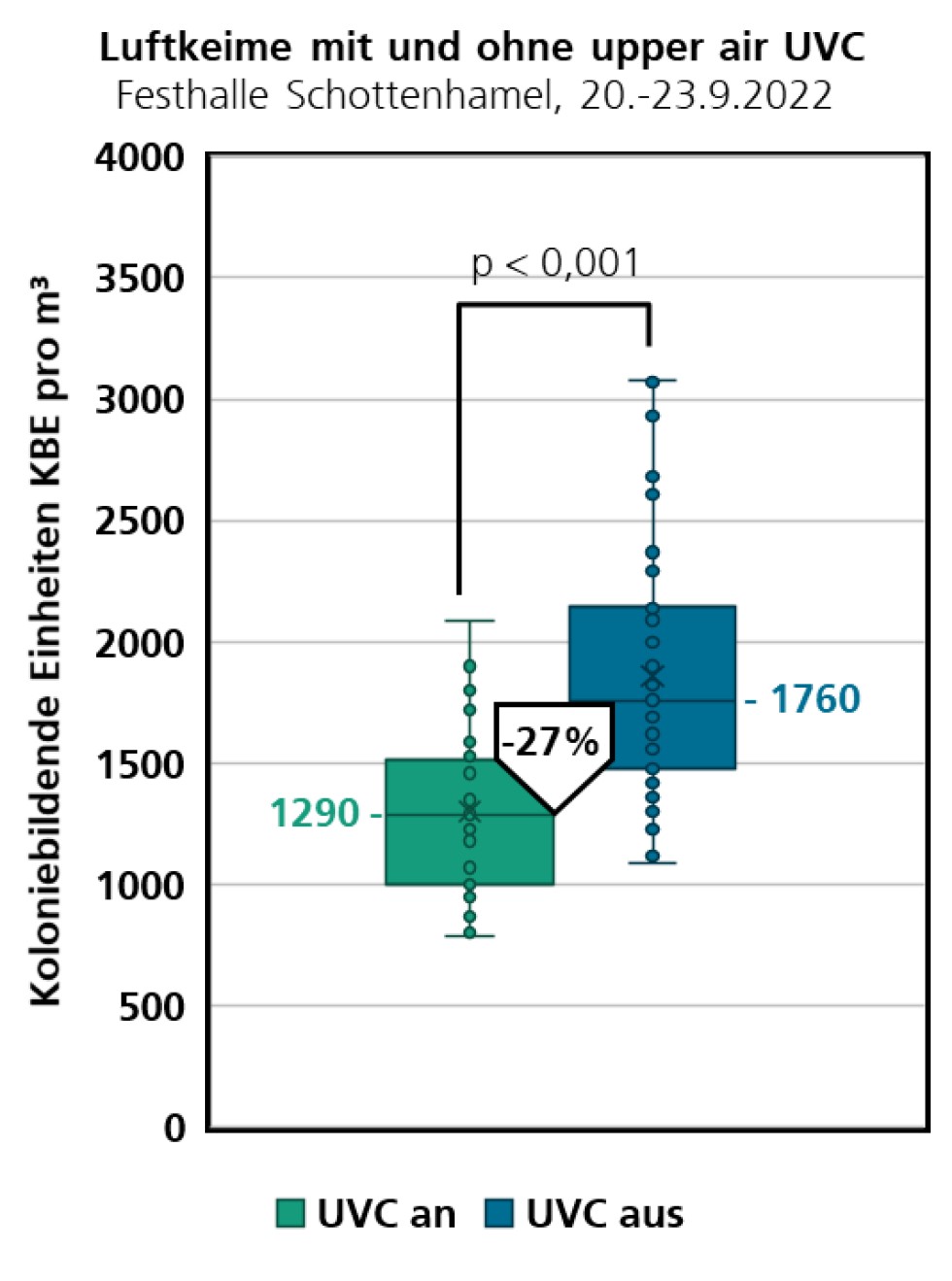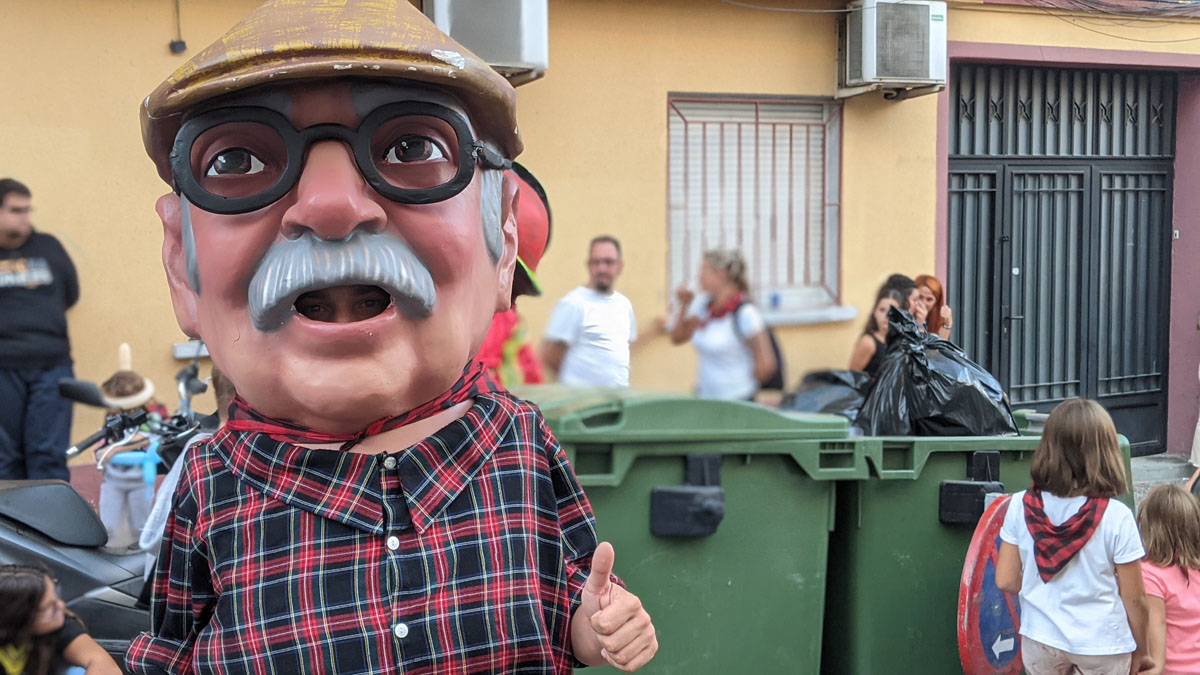Can air quality at major events be demonstrably improved through the use of ultraviolet radiation (UVC)? A research project at the world’s largest folklore festival in Munich should provide the answers.
Research project at the Wiesn: the Schottenhamel tent served as a test laboratory.
Photo: imago / Smith images
UVC technology is already used to disinfect surfaces, such as escalator handrails, for water treatment and also for disinfecting the air in rooms. But can radiation also help in the long term at major events to inactivate microorganisms in the air and thus ensure cleaner air? Researchers from the High Performance Center “Secure Intelligent Systems” (LZSiS) studied this question at Oktoberfest 2022.
Measurements in an exceptional setting
“The phenomenon that the number of germs in the air is higher in larger groups of people is nothing new. We took it for granted. Since Corona, however, the sensitivity to this has increased considerably “, explains Professor Dr. Gunnar Grün, creator of the project and deputy head of the Fraunhofer IBP. The good effectiveness of the UVC cleaning principle has already been demonstrated in smaller forums , for example as part of the “CineCov” project for a cinema with 55 seats Thanks to the collaboration with the Schottenhamel family, the method could now also be tested in a large company with over 6,000 seats on an area of 4,800 m2.
Fraunhofer IBP employees carried out preliminary measurements over four days in the Schottenhamel festival hall. To do this, the researchers installed 14 projector-sized UVC devices in the upper area of the marquee. The working hypothesis: the breathable air is warmer than the ambient air and therefore rises to the roof area of the awning, also driven by the body heat of the guests. The air contains microorganisms of all kinds, including the much-discussed corona virus, but also numerous other germs in the air. These are mostly harmless, but there are also those that cause various other infections and have traditionally been able to lead to flu or cold after attending large events. If microorganisms enter the range of UVC devices, the invisible UVC light deprives them of their ability to reproduce. As the air cools, it falls back to the ground and is inhaled by guests or employees, albeit with a diluted concentration of microorganisms.

In the Schottenhamel tent, the oldest in Munich’s Wiesn, a total of 14 UVC devices were installed under the ceiling.
Photo: Festhalle Schottenhamel / K. Jungblut
Less background exposure thanks to the use of UVC
During the ongoing festival operations, measurements were made in the center of the festival hall for two days with the devices turned on and another two days without them. A measurement cycle was performed every two hours. For 20 minutes, 100 liters of air were sucked through five gelatin filters, which in this way were loaded with germs in the air. The loaded filters were then processed in the Fraunhofer IBP microbiological laboratory and counted every ten days. It was found that on the days the devices were used, the number of microorganisms capable of reproducing in the air samples was reduced. The number of so-called “colony forming units (CFU)” was lower in the sampling carried out with the UVC devices compared to the reference days. With a median of 1290 CFU / m³, the number of germinable units of aerobic germs on days with UVC use was 27% lower than on days without UVC with a median of 1760 CFU / m³.

Clear results: a comparison of colony forming units of airborne aerobic germs with and without the use of UVC devices. Chart: Fraunhofer IBP
Consequently, the conclusion of the Fraunhofer IBP is clear: UVC technology can reduce the number of reproductive germs in the air. “Technological solutions can make a significant contribution to increasing well-being and safety at large events. If the air can be sanitized, in addition to the concrete reduction of potential germ contamination, this also has positive effects on a carefree atmosphere “, says Professor Dr. Gunnar Grün convinced. The direct path of infection, for example via droplets or smear, it will obviously remain, but the background exposure will be less.
Methodology and partners involved
According to the Fraunhofer IBP, volumetric microbial measurement in air is one of the standard methods of indoor microbiology. Background exposure to germs in the air is a great indicator for examining the practical execution of hygiene measures. However, various safety precautions need to be taken for the use of UVC technology, which was also used for the research project at Oktoberfest and which was also approved for occupational health and safety.
Six Fraunhofer institutes are gathered in the high-performance center “Safe intelligent systems” (LZSiS). The Fraunhofer Institute for Applied and Integrated Security (AISEC), for Microsystems and Solid State Technologies (EMFT), for Building Physics (IBP), for Foundry, Composite and Processing Technology (IGCV), for Cognitive Systems (IKS) and for Process Engineering and Packaging (IVV). The Technical University of Munich, the University of the Federal Armed Forces of Munich and the Munich University of Applied Sciences are also involved. The technology partner for the Oktoberfest project was Signify GmbH with Philips UVC devices.
you may also be interested in:
Heat pump: air, ground or water – what are the differences?
Chillventa expands the support program
Air humidification protects against electrostatic discharges
Hydrogen for construction only of minor importance
Sponge City: complementary supply with “city water”
Additional offers: silence is the worst alternative
“The introduction of BIM is the responsibility of the boss”
Subsequent changes in performance: what should be considered when it comes to remuneration?
Interest in heat pumps has increased significantly
Experts warn: do not reduce the temperature of the hot water

